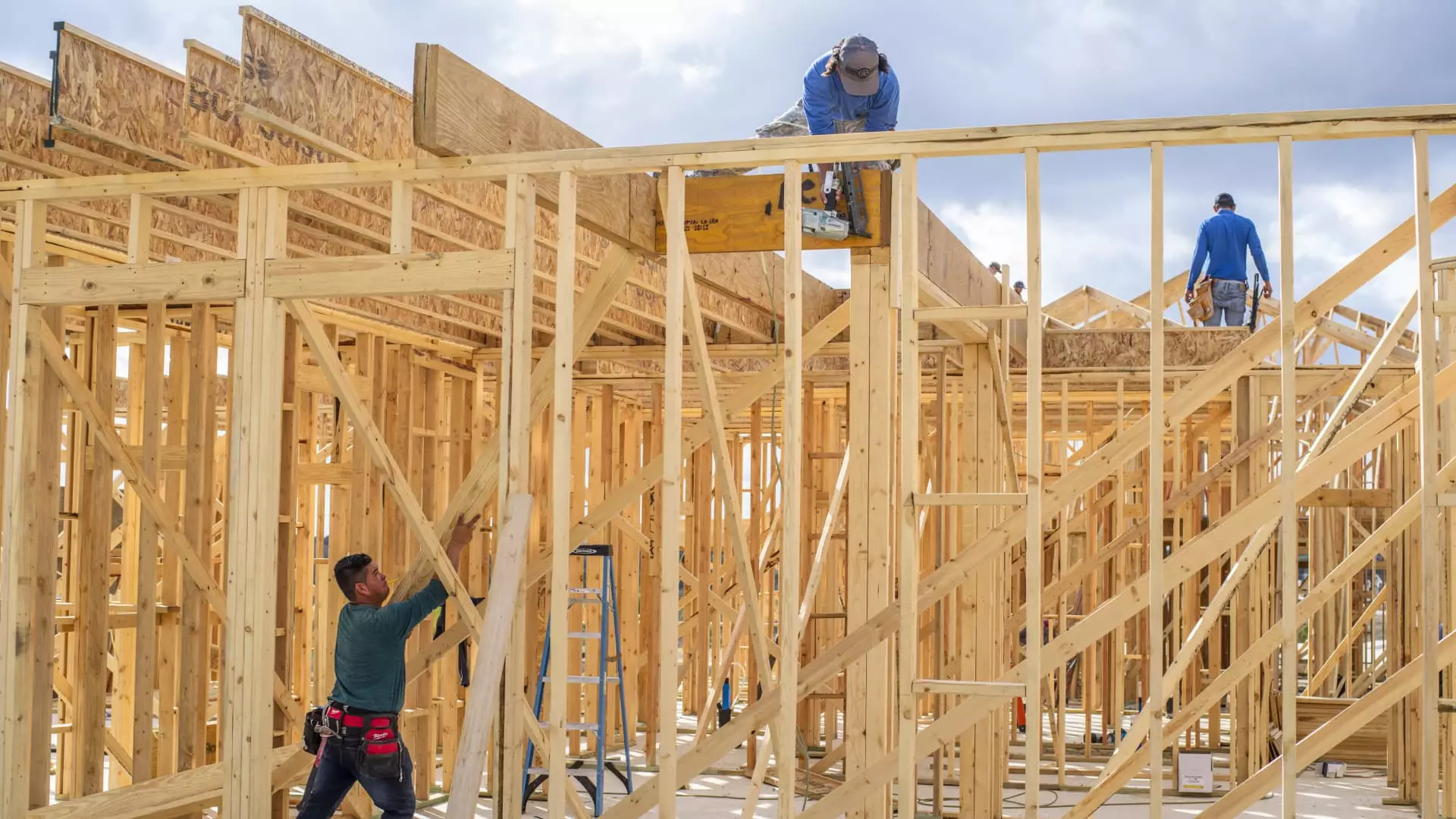The housing market in the United States is feeling the weight of several economic pressures, especially in the realm of single-family homes. Recent findings from the National Association of Home Builders (NAHB) reveal a notable decline in builder sentiment, marking a worrying trend for the industry’s future. The data communicates much more than a mere drop in numbers; it indicates broader economic anxieties that could reshape the landscape of homebuilding throughout the year.
The NAHB’s Housing Market Index (HMI) serves as an important gauge of builder sentiment, and a decline in its readings indicates a shift in the market mood. In February, the HMI fell 5 points to a stark 42, highlighting concerns that have lingered for months. Comparatively, this figure was slightly below last year’s level of 48. Generally, any HMI reading below 50 signals negative sentiment, casting a pall over predictions for future growth in the homebuilding sphere. Builders are left in a precarious position, as optimism relies heavily on their perceptions of evolving regulatory frameworks and economic policies—which, at present, remain fraught with uncertainty.
At the core of the sentiment decline is the pressure stemming from rising costs, which have escalated due to proposed tariffs introduced by the Trump administration. These tariffs, affecting appliances and building materials sourced from international trade partners like Canada and Mexico, threaten to drive up operational costs for builders significantly. With over 30% of necessary softwood lumber and a considerable portion of household appliances imported, the escalating tariffs could potentially disrupt supply chains and inflate prices further.
Adding to this intricate web of challenges are elevated mortgage rates. The average fixed 30-year mortgage rate climbed above 7% for the early months of the year, diverging from last year’s more favorable rates that hovered in the 6% range. Such increases serve to deter potential buyers who are already grappling with inflated home prices compared to a year prior, thereby further muddling the landscape for builders. Housing affordability continues to erode, leading builders to express palpable concern about future demand for new homes.
The reactions from builders are telling. In several recent earnings reports, companies have pointed to a marked pullback in buyer traffic—one component of the HMI, which fell to 29. This metric is crucial as it reflects real-time interactions with potential buyers, and such a dip indicates that homebuyers are hesitant, potentially exacerbated by high costs and interest rates. Moreover, forecasts for the spring market, a traditionally robust period for home sales, now seem less optimistic.
Despite a slight decrease in builders reporting price reductions—down to 26% in February—many are facing the harsh reality that traditional sales incentives have lost their power to sway buyers. With the clarity that reduced mortgage rates are not enough to offset the sting of high prices, the diminishing return of incentives is becoming apparent. Builders striving to lower prices may find themselves facing a diminishing pool of interested buyers as affordability erodes further.
In light of these findings, it becomes clear that builder sentiment is not merely a reflection of immediate concerns but a window into the broader economic atlas of the country. Moving forward, building professionals and industry stakeholders are calling for decisive administrative actions aimed at regulatory reform and policy stability to restore confidence in the market.
Without substantial adjustments to alleviate cost pressures and clarify future tariffs and trade policies, the outlook for builders remains murky. The hope is that a cohesive approach to pro-development strategies from the government could reshape perceptions and make a significant difference in enhancing both builder confidence and the overall housing market trajectory.
While the recent drop in builder sentiment is steep and concerning, it is a call to action for stakeholders across the housing sector to adapt and respond effectively to the myriad economic pressures at play. Only time will tell how the market will evolve, but early indicators suggest that significant intervention may be needed to reignite momentum in the single-family homebuilding arena.

